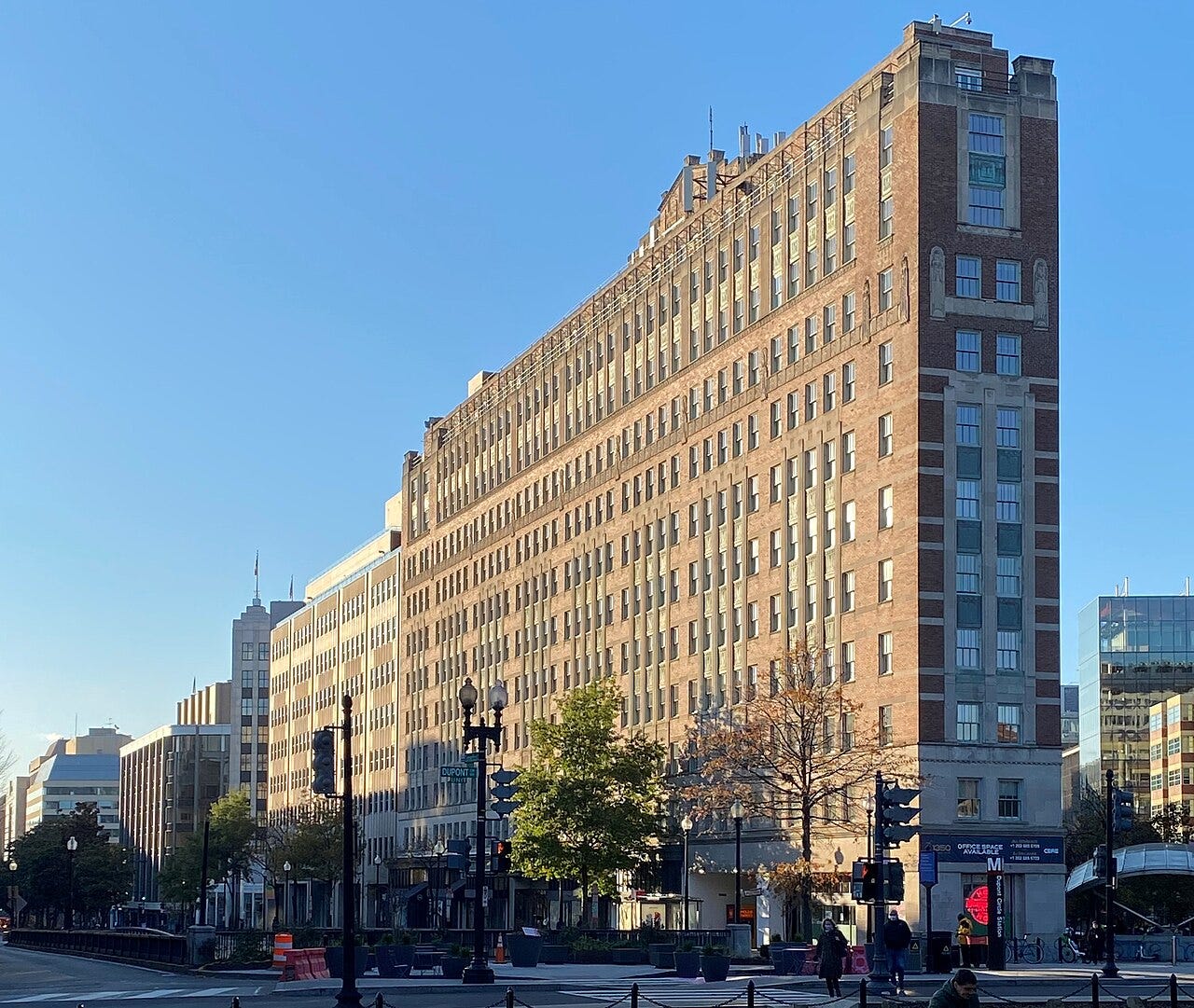Aladdin's Palace: The Home of Edson and Julia Bradley
In 1907, New York liquor baron and president of the Kentucky Distilled ries and Warehouse Company, Edson Bradley, bought Gardiner Greene Hubbard’s house on Dupont Circle. The Bradleys had been making Washington their winter home for several years already and had become quite active in the city’s social life.
Even after Hubbard’s expansion of the original Galt house, it was still not large enough for the Bradleys. Additionally, it was still in the by now passé Gothic Revival style, when Beaux Arts architecture style was the rage of Washington's elites. While Bradley might have wanted to simply raze the old Hubbard house and build a larger one, there was a superstition at that time among Washington society that living in a new house would bring bad luck. Deciding to work with what was already there, Bradley contracted New York architect Howard Greenley who enlarged the house to 40-rooms and reaching up to 60-feet on a footprint of 16,650-square feet. Bringing the house's exterior style to the interior, entire rooms were purchased and imported from French chateaus, English castles and manor houses and reinstalled intact.
When the improvements were complete after four years of work, the house covered more than half a city block and featured a Gothic chapel with seating for 150, a large ballroom, an art gallery, a five-hundred-seat theater with an electric action pipe organ, and a reception hall on the second floor re-creating a Roman atrium. It became known as "Aladdin’s Palace" due to its sheer size and grandiose nature.
Julia Bradley was very socially ambitious. Having the largest house immediately on Dupont Circle itself was just the beginning. Because other society mavens hosted regular musicales with some notable or up-and-coming musicians in their salons, Julia brought in world-renown soloists and stars from the Metropolitan Opera to perform at her bi-weekly musicales in her 500 seat theater. Any societal ball of the season was outdone by Julia, hosting what became known as the American Beauty Ball that required so many American Beauty roses to decorate the house for the event that the market for the flowers was depleted for days afterward.
Ultimately, Julia may not have left the imprint on Washington society that she had tried so hard to achieve. One problem was that the Bradleys had arrived in Washington in the twilight days of its Gilded Age. Julia was very ostentatious about her wealth and was very competitive, undoubtedly putting off many of those with whom she had hoped to ingratiate herself. Her obituary in the New York Times (August 23, 1929) stated that "Mrs. Bradley was known as a lavish though not a spectacular entertainer. Her musicales...are remembered by her friends."

In August 1922, the Bradley’s sixty-room summer home near Syracuse, New York, was destroyed by fire. The Bradleys were able to escape to safety aboard their yacht. Nothing but the stone walls of the house were left standing. Finding themselves now without a proper summer home, the Bradleys used this as an opportunity to move from Washington to Newport, Rhode Island, where Julia undoubtedly hoped to make an impression. But, the Bradleys not only moved themselves, but also the entire interior of their Dupont Circle house as well.
Over the course of two years, the Bradley’s had much of their Dupont Circle house dismantled and shipped to the new location in Newport. A preexisting Elizabethan Revival mansion, Sea View, already stood on the new Newport site, and the Bradleys’ Dupont Circle house was incorporated into it and its massive additions. Work on the exterior continued for two years and required the use of many railroad cars and trucks and was one of the largest buildings ever to be moved in this manner. The rooms that had been imported intact from France and first installed in Washington, D.C., twenty years earlier were reassembled at was now known as Sea View Terrace, assuring again that the Bradleys would not be living in any kind of a new house. When it was finally complete, the project cost over $2 million and was the largest of the privately-owned summer "cottages" of the Gilded Age in Newport.
Back in Washington, the abandoned shell of what remained of the old Bradley house continued to stand on the lot. Nobody saw a use for it and there were serious plans to build an opera house on the site, but that plan was abandoned when the lot to the south was not available. The art deco-style Dupont Circle Building, designed by architect Mihran Mesrobian, was finally built on the site in 1931.








